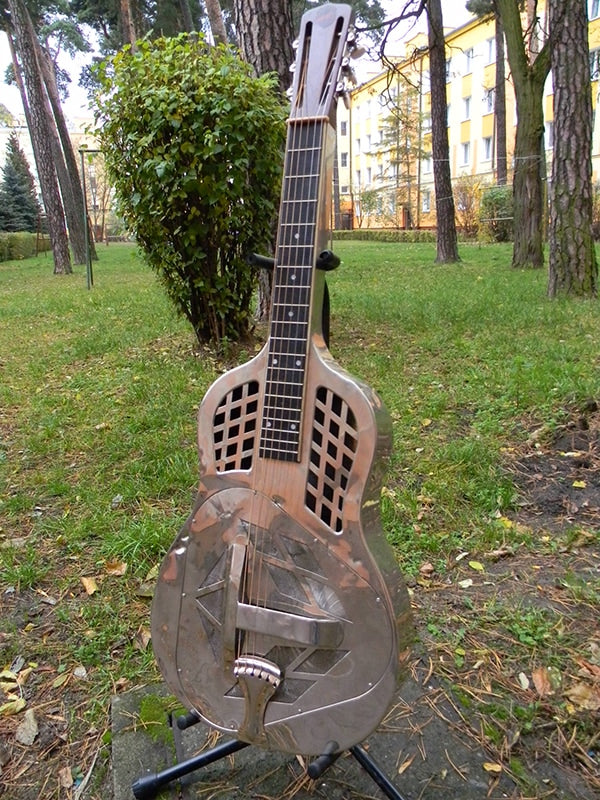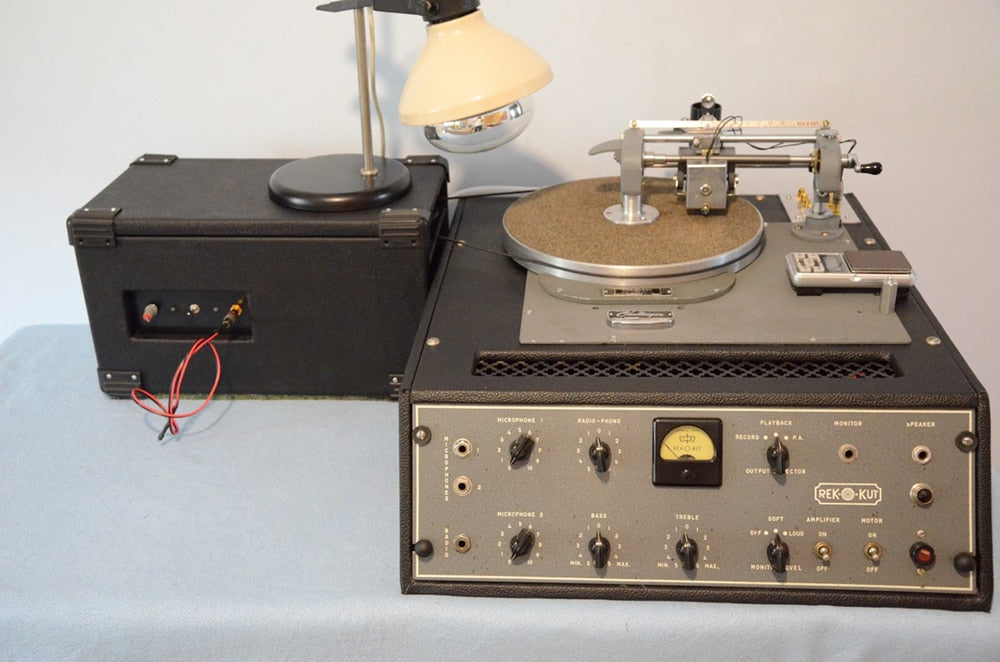When it comes to the preservation of vintage technology, the demographics show a significant age bias. It is a rapidly aging population that is primarily interested in such things, as evidenced by the problems faced by various clubs devoted to such interests around the world. Their membership is not getting any younger and there are not many young faces for the torch to be handed down to.
Fortunately, there are exceptions. An increasing number of them, dare I say. Myself included, currently counting 36 revolutions of the Earth around the sun. I am glad to see new faces in these fields, as it means that these interests may actually stand a chance of surviving, in the long term. While faces younger than mine are still rare, there are quite a few people aged 35 to 45 who are taking up “vintage” interests, on a professional level.
Today we are going to travel to Bydgoszcz, a city west of Warsaw, in Poland, to meet Jędrzej Kubiak, an enthusiastic individual with several vintage audio interests, and some not directly audio-related.
He is known as the foremost authority on the Unitra Fonica Daniel G-1100 turntable, manufactured in Poland from 1976 until 1982. It was based on the Telefunken S500 and during the time it was in production, it was the highest-end turntable available in Poland. But don’t rush to buy one just yet, if you have not heard of them before! During the country’s communist era, while it was theoretically possible to import products from other countries, it was so expensive that it was far beyond the economical means of most normal people living there. Jędrzej describes it as “the most advanced and most defective Polish turntable ever” and considers it to be “close to real hi-fi.” Poland is by now part of the European Union and while it is relatively simple to import anything you like from other EU counties, there is still a nostalgic demand for the “Daniel” among Polish audiophiles. Jędrzej explains that the desire for them is not about their quality, but because it was a prohibitively expensive luxury item at the time, and many of the generation old enough to have wanted one in their youth can now finally fulfill their childhood dreams. He has come across several examples which were assembled, to varying degrees of success, in people’s homes, using parts that were stolen from the production line by the workers. There were lower-priced turntables available in Poland, but they were horrible and known to be record killers, contributing to the rarity of old Polish records in mint condition nowadays. Jędrzej estimates he has restored approximately 250 Daniels by now.
But he does not limit himself to the historical borders of the Iron Curtain. He is also restoring vintage American jukeboxes, such as those made by Wurlitzer and Seeburg.

A couple of classic Wurlitzer jukeboxes from 1950, at Jędrzej’s awaiting restoration. These were the first jukeboxes that could play both 78 rpm and 45 rpm records. All photos in this article courtesy of Jędrzej Kubiak.

A 1969 Seeburg LS2 jukebox, heavily modified by Jędrzej, with the carriage and bank rotated 180 degrees for better visibility, assisted by custom front door glass.
Unsurprisingly for a man with such interests, he had also restored and currently owns a 1971 Volkswagen Deluxe bus, fitted out as a camper van. He has a soft spot for classic cars and while the VW bus is quite a showpiece, he prefers a more modest daily driver. For that, he has restored and drives a 1976 Skoda S100, a car that was rather popular behind the Iron Curtain and is still often seen in the Czech Republic and Slovakia, where it was produced (back when it was one country known as Czechoslovakia). However, these 4-cylinder, 60 cubic inch (988 cc), rear-engine, rear-wheel drive Skoda cars were rather expensive in Poland at the time. Poland was manufacturing cars for the working class, under license from Fiat. A popular example was the affordable Polski Fiat 126p, an air-cooled, 4-stroke, 2-cylinder, 36 cu. in. (594 cc) engined, ummm… car. Jedrzej also owned one, for a while, prior to upgrading to the Skoda. It was 54.3 inches wide, 120.2 inches long and weighed around 1,300 lb. (600 kg). Meanwhile, the average American lawnmower of the time… OK, I will spare you the details. No, but really, what they refer to as a small block engine in the US is usually 10 times…ok, sorry. I’m just…It’s difficult. How can it…? OK, back to audio…

Jędrzej’s Volkswagen Deluxe Bus, built in March 1971, powered by a 97.6 cubic inch (1.6-liter) air-cooled VW boxer gasoline engine.

The daily driver, a 1976 Skoda S100, manufactured in Czechoslovakia, powered by a 60 cubic inch (988 cc) 4 cylinder, water-cooled, overhead camshaft engine. This was a rear-engine, rear-wheel drive configuration, with the fuel tank in the front.

Before upgrading to the Skoda, Jedrzej’s daily driver was this 1977 Polski Fiat 126 P, underpowered by a 36 cubic inch (not a typo, this is 594 cc), 2-cylinder, air-cooled gasoline engine.

The not-exactly-roomy interior of the Folski Fiat 126 P. They say it’s not the size, but what you do with it. And what Jędrzej did with it was to sell it and get the Skoda and the Volkswagen, both representing significant upgrades in terms of size.
What Jędrzej may be lacking in cubic inches, he certainly more than makes up for in skill and style. An avid guitar player, he has a passion for vintage resonator guitars. Not only does he play them with a passion, but he is also known for completely rebuilding them! The extent of his restorations is seriously impressive.
He takes damaged 1920s and 1930s Nationals, turns them into toothpicks, and then back into complete instruments that look and sound better than when they had originally left the factory.

Extensively-damaged USA made 1937 National Style 0 Variation 7 guitar (an exact twin of Mark Knopfler’s “Brothers in Arms” guitar). It’s an instrument with a real brothers in arms World War II story.

National Tricone Style 1 after restoration.
At this point, it would hardly come as a surprise that he also collects and restores electric table fans! Certainly adds to the coolness factor! Or perhaps acting as a reminder that domestic use of air conditioning was not exactly common in 1970s Poland.

Jędrzej’s collection of electric table fans, ranging from 1930s Samson fans made in USA to 1950s Charkow and GEG Russian fans, popular in the vast public sector offices of the USSR and still occasionally encountered in the picturesque public sector offices of the EU.
As if this all was not enough, Jędrzej is also involved with disk recording. He restores vintage Rek-O-Kut disk recording lathes and offers upgrades for them. He has developed an external motor for improved speed stability and lower rumble, an oil dashpot system, a counterweight system for groove depth setting to replace the original spring arrangement, a suction unit for removing the vinyl thread waste material, and several more bits and pieces. One of the latter is what he describes as a “crank mod” for the Rek-O-Kut M12 overhead recording mechanism, which was bolted on to the company’s idler-driven broadcasting turntables to turn them into disk recording lathes. The original configuration of the M12 did not permit spiral grooves to be added between selections, or a lead-out groove at the end of the disk (the increasing distance between the grooves at the end of the record, acting as a visual indication that the recording has reached an end). The crank mod adds a hand crank (a feature often found on other overhead recording mechanisms of the time), allowing the operator to manually create spirals and lead-out grooves. On modern disk mastering lathes, these functions are enabled by means of pushbuttons and switches, which electronically accomplish the faster traversing of the mechanical assembly to increase the distance between the grooves.
He has also restored some very rare Dutch Sondisko lathes, which have many unusual features, including some hints that the engineer who originally developed these machines had some form of obsession with bevel gearing…

Sondisko record cutting lathe, made in the Netherlands around 1938. The cutter head was restored under the supervision of J. I. Agnew.

The Sondisko record cutting lathe.
He has been documenting the history of Sondisko, tracing one of the machines he restored to Karel Leonardus van Agthoven, a prominent recording engineer and producer in the 1930s who recorded many of the Dutch hits of the time. According to Jędrzej, Sondisko Records was an important part of the anti-Nazi music movement in occupied Amsterdam during World War II.
Apart from his technical contributions and lathe restorations, Jędrzej is also using vintage disk recording lathes for direct-to-disk recordings of music and poetry, even demonstrating how records are cut during a direct-to-disk recording session on national television in Poland. His work focuses on the use of equipment predating the stereophonic era. Jędrzej Kubiak can be contacted by e-mail (jedrzejkubiak@gmail.com) or telephone (0048 784 246 630).

A 1950s USA made Rek-O-Kut “Challenger” record cutting lathe, fully restored with external platter drive, adjustable counterweight/dashpot mod, and non-balling thread suction unit.

Another view of the Rek-O-Kut “Challenger.”

A 1967 USA made Wurlitzer “Americana” jukebox, able to play 200 selections (100 records). It features custom see-through front glass in place of the original lining, for better mechanics and for turntable visibility.
Header image: Rek-O-Kut “Challenger” record cutting lathe.



